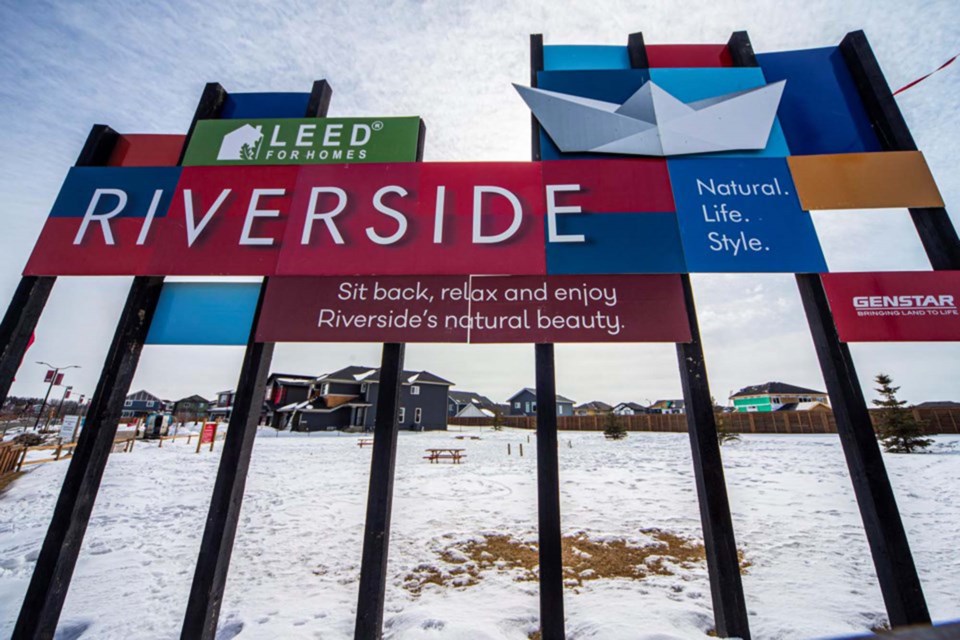Like a dog and a nice stroll around the neighbourhood, density and walkability go hand-in-hand.
Faring well in city rankings as St. Albert did in the latest Globe and Mail livability report is nothing new to Mayor Cathy Heron, but she’ll take it.
The Botanical Arts City improved its overall ranking from 31 last year to 25 this year, and scored in the top 10 for livability specifically for entrepreneurs.
We scored well in areas such as safety, household income and employment but there is room for improvement in the transportation realm. Specifically, St. Albert scored 39 per cent below the national average for walkability, which measures how accessible amenities such as stores and recreation centres are from residential areas.
Heron said Wednesday St. Albert is still auto-dependent, either private vehicles or public transit, and a community that wants to increase its walkability score needs to add density and mixed-used development.
She said when selling her own home in Oakmont last year, the walkability score on its MLS listing was “horrible” because there was no commercial included when the neighbourhood was built out. She said the 52,000-plus square foot Shops at Boudreau are to address that.
In Riverside, with its Co-op and fast-food outlets, it’s a different story.
“When you look up at Lacombe Park, very limited Deer Ridge, North Ridge, there's no commercial,” she said. “And so when we're trying to pepper that in to some of the new planning to make sure that if you want to just take your dog for a walk and pick up a quart of milk or whatever you need, then that's a preferable solution to getting in your car.”
She said the more mixed-use development, the better.
“The Riverside development is really a good example of where we should be going a little bit more in the future.”
St. Albert also had a weaker score for housing affordability, which Heron said the city is making strides on, and ranked 44 per cent below the national average for diversity.
“We're making our best efforts towards affordability and I think that's only going to get better,” Heron said.
On the flip side, the city scored 44 per cent better than the national average for safety, which was also no surprise to the mayor. Having Sturgeon Community Hospital as a key amenity within the city limits helped the overall score, too; also, 86 per cent of residents have a regular health-care provider.
“I'm sure most St. Albertans would feel that they are quite safe to take their dog for a walk to get that quart of milk when they need it,” she said. “We've done a lot with our police committee (and) with engagement to seeing what our residents need out of our RCMP detachment, where our numbers are coming from, which is fantastic.
“So I'm not surprised at all. Of course, St. Albert is a place that people want to live for that reason.”
St. Albert has scored well in other reports, including topping the list of best places to live in Alberta in Maclean’s magazine in 2019 and the 23rd best in Canada due to its healthy economy, wealthy residents, amenities and culture. In 2014, MoneySense named St. Albert the best small city in Canada.
“If you take one ranking and you see it an improvement, that's always a good sign, so much like Coun. (Mike) Killick, I'm happy and pleased to see that St. Albert was recognized.”
And when it comes down to it:
“Well, we're above Edmonton, so that's just the best news ever, and I don't mind saying that.”




